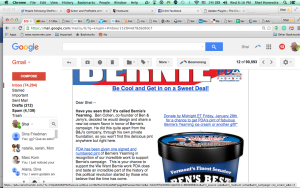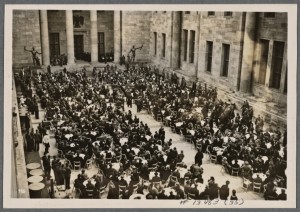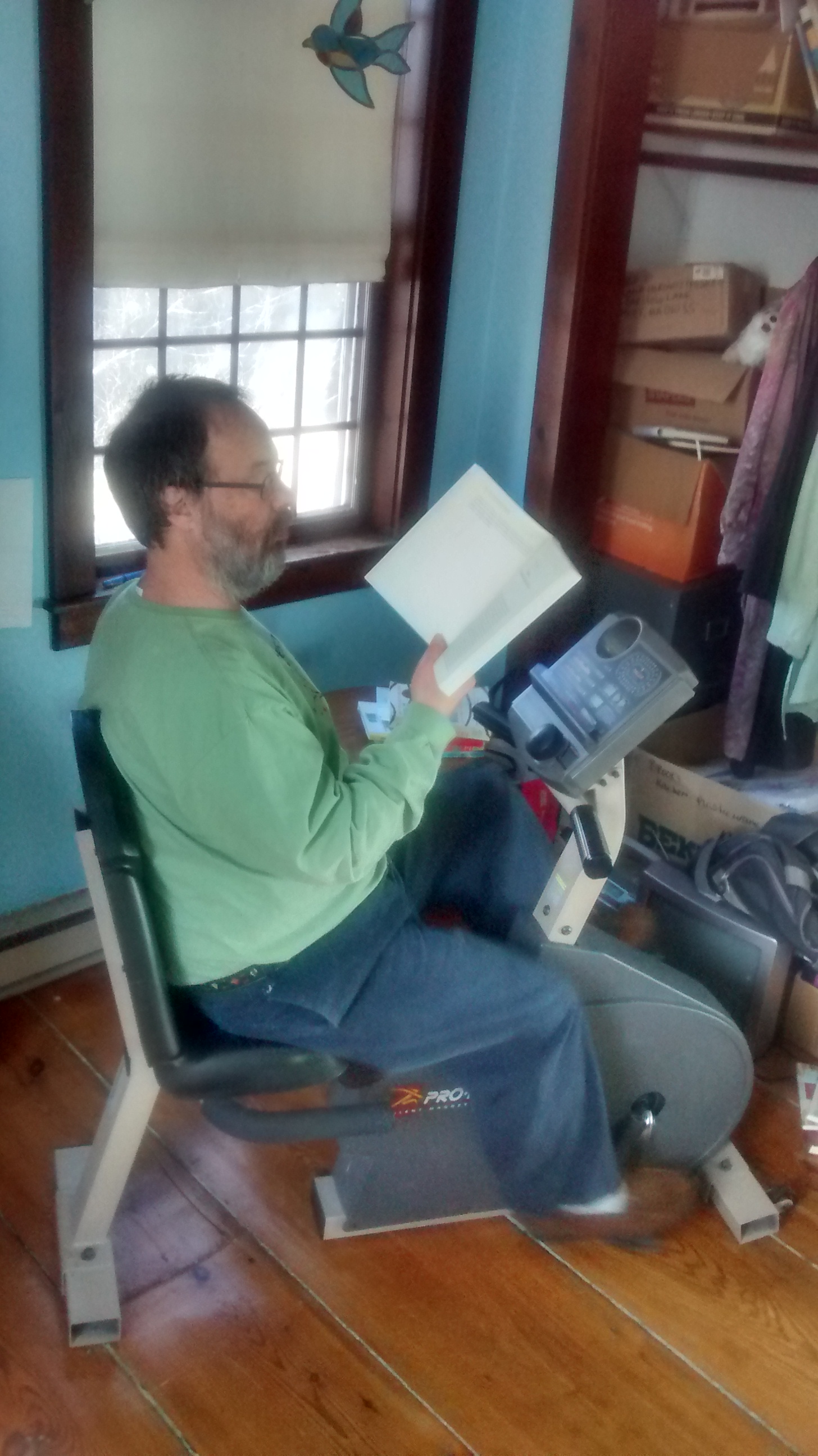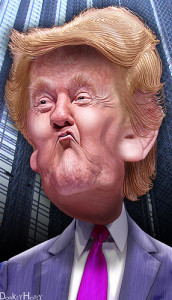Hillary’s Pessimism vs. Bernie’s Optimism
I deeply resent Hillary Clinton’s message that we can’t go for what we really want. Barack Obama beat her in ’08 because his message was “hope” and “yes we can.” He made some of that a reality in spite of tremendous resistance–more than I’ve ever seen for ANY president’s policies. But he would have gotten much more accomplished if he’d continued organizing: bringing the same coalition that led him to victory into supporting his agenda and pressuring that reluctant Congress. As a former community organizer, he should have known this.
Bill Clinton’s presidency shows the dangers of the HRC approach. By dismissing any effort at real change right from the start, he allowed himself, over and over again, to back away from meaningful change and turn what should have been the post-negotiation fallback position into the starting gate, and then allow that to be whittled down further until the change was so small that Grover Norquist actually could drown it in a bathtub.
Obama made the same mistake. “Single payer isn’t on the table but we have a public option” turned into. “no public option.” And the ACA as finally passed was a giveaway to insurance companies. Yes, it made people’s live’s better and I’m glad it passed. But Obama squandered the potential for much deeper reform.
Isn’t it so much better to aim for what you really want and get only three-quarters of the way than to aim for what you think is “achievable”—and still get only three-quarters of the way? It’s a very rare football play that gets a touchdown from the kick-off point. Much more commonly, the team advances the ball, play by play, and starts again from the end point of the last play. Then they get the touchdown.
It took 100 years to eliminate slavery in the US. It took another 100 to pass meaningful civil rights legislation, and it may be another 100 before the cancer of racism is nothing but a memory. It has already taken about 80 years to get even the wimpy ACA; that doesn’t mean we say we don’t need to make more progress. And it certainly doesn’t mean you have to tear down the ACA before you have something better in place.
Henry Ford said, “Whether you think you can do a thing or think you can’t do a thing, you’re right.”
Muhammad Ali put it this way:
Impossible is just a big word thrown around by small men who find it easier to live in the world they’ve been given than to explore the power they have to change it. Impossible is not a fact. It’s an opinion. Impossible is not a declaration. It’s a dare. Impossible is potential. Impossible is temporary. Impossible is nothing.
And I personally have taken on the “impossible” goal of showing the business community how to turn hunger and poverty into sufficiency, war into peace, and catastrophic climate change into planetary balance—at a profit. Taking my cue from Ali, when I speak on this, my talk is called “Impossible is a Dare!” I’ve also written a book, Guerrilla Marketing to Heal the World, that demonstrates how these future victories are actually quite possible. I’ve done “impossible” things before. Why restrict ourselves by thinking small?
I have other issues with Hillary besides her willingness to settle for less even before the negotiations start. HRC’s ties to Wall Street make me nervous. Her hawkish rhetoric, even more so. And her Middle East policy is just plain shameful. As an American Jew, I stand up and say “Israel right or wrong” is as misguided as “America right or wrong” was in the Vietnam era—and I further say that we progressives knew that going into Iraq as we did was a terrible mistake. I was out there in the streets with millions of other Americans, saying “don’t do this, it will be a disaster.” There is zero justification for her vote to support the worst foreign policy disaster in history.
I will proudly—excitedly—vote for Bernie in the primary. Nonetheless, if Hillary is the nominee—and she probably will, due in part to Party rules that allocate delegates to high-status mainstream Democrats over and above those allocated in elections—I would support her unequivocally over any of the Republicans running. I think she has a good heart, I’d much rather see her in charge of picking the next members of the Supreme Court than any of that bunch, and I would see her election—as I saw Obama’s—as getting us closer on the path from the kick-off to the goal.











